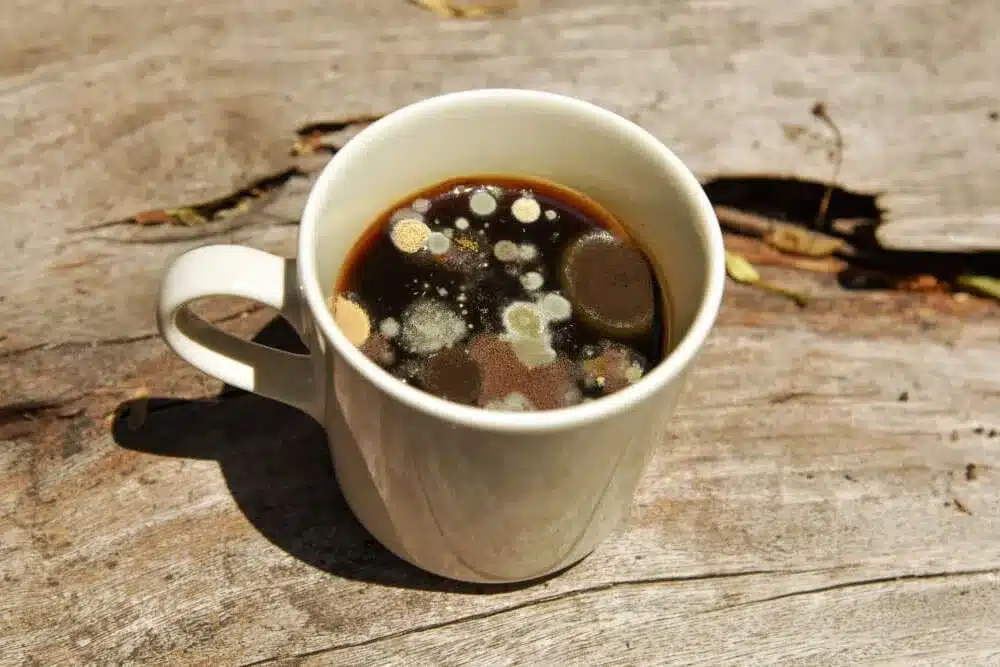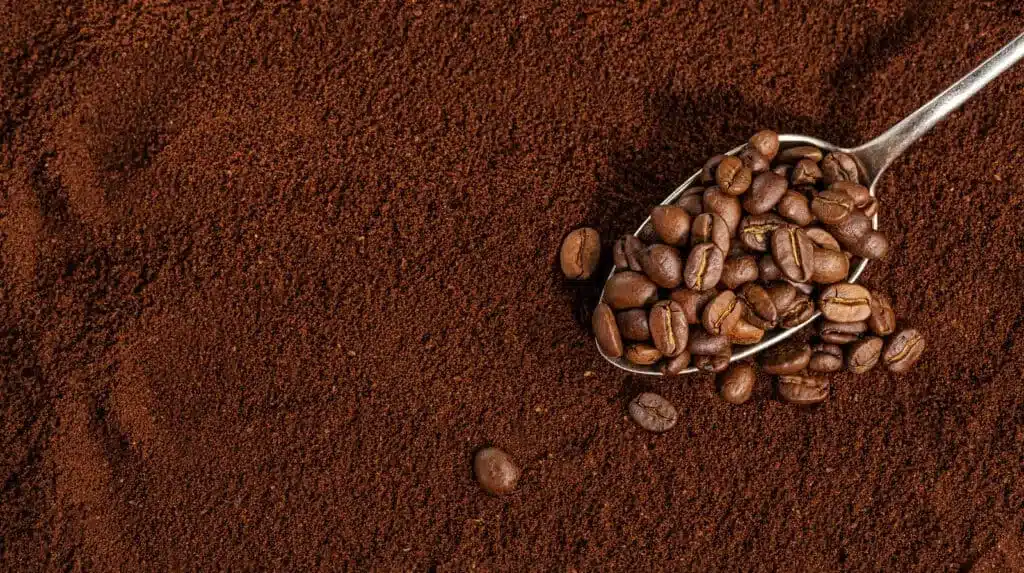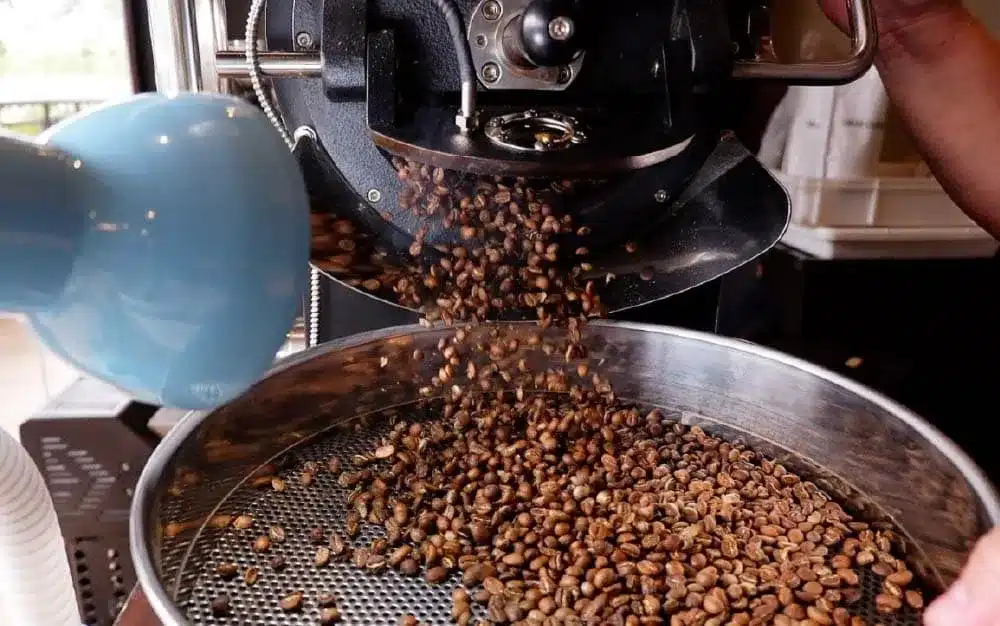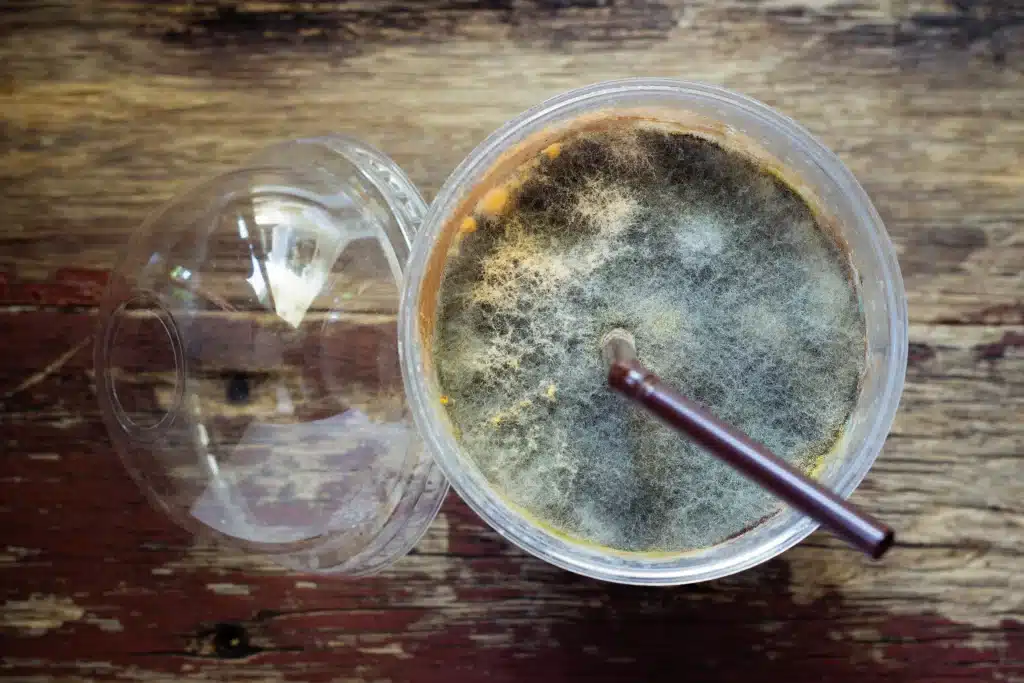Calling all coffee lovers who enjoy a cup of coffee to jumpstart their day. So, do you think that your ideal cup of coffee is the ultimate boost you need, whether it is long black coffee or decaf? Yes, it might be true, but even premium quality coffee beans can develop mold or simply mycotoxins if not stored properly. Although coffee poses certain health benefits, it might expose you to certain health risks if it has a specific percentage of mold in it. So, in this article guide, we will unravel potential prevention tips to stop the growth of mold in coffee beans and keep your beverage fresh.

What is Mold in Coffee?
A form of fungus called mold can develop on a variety of organic materials, including coffee. It can create spores that are undetectable to the human eye and grow well in warm, humid settings. If left unchecked, these microbes have the potential to spread swiftly and cause wide contamination. Besides, under extreme circumstances, black mold can develop.\

Various Types of Coffee Mold
Molds in coffee are of various types, some of which are to be discussed below:
1. Aspergillus: This mold can produce levels of mycotoxins, which are dangerous chemicals that can have an impact on human health. It is commonly found in coffee beans.
2. Penicillium: Coffee also contains this form of mold. Although it is not as dangerous as Aspergillus, it can nonetheless degrade the coffee’s flavor and quality.
3. Fusarium: This mold has the ability to produce mycotoxins and degrade coffee beans, resulting in a loss of flavor and safety.

The Health Dangers of Coffee Mold
While not all molds are dangerous, some kinds, such as those that produce mycotoxins, can be dangerous to your health.
Having moldy coffee might cause:
- Allergic reactions.
- Breathing problems
- Issues related to the stomach
- The weakened immune system

Reasons for Coffee Mold
Environmental Elements
Mold in coffee pots can develop due to environmental factors, which are:
1. Humidity: Mold can develop best in environments with high humidity levels. Because coffee grounds and beans absorb moisture from the air, mildew growth can occur.
2. Temperature: Mold grows more quickly in warm weather. It is essential to store coffee in a dry, cool environment to avoid mold growth.
Storage Methods
The way you store the coffee greatly contributes to coffee bean mold.
1. Inadequate Sealing: If coffee bags or containers are left open, air and moisture can get inside and cause infestations to form.
2. Insufficient Containers: Mold can grow more readily when airtight containers are used because they let moisture and air in.
3. Old Coffee: If coffee isn’t stored correctly, it is more prone to grow infestations after being kept for a long time.

Preventive Techniques for Coffee Mold
Folks, if you want your coffee to be microbe-free, some strategies can help you. So, in this section, we’ll cover ways to make your organic coffee free of mold.
Ideal Storage Environment
1. Cold and Dry Environment: Keep coffee out of direct sunlight and in a cool, dry environment. The range of ideal storage temperatures is 60–75°F (15–24°C).
2. Humidity Control: Maintain a humidity level of less than 60% in the storage space. If needed, use a dehumidifier to keep things at their ideal state.
Appropriate Storage Jars
1. Airtight Containers: Use airtight containers to keep coffee safe from moisture and air. A great way to keep freshness is with vacuum-sealed containers.
2. Opaque Containers: To avoid letting light deteriorate the flavor and quality of coffee, store it in opaque containers.
Usage and Rotation
1. First In, First Out (FIFO): Use this approach to make sure older coffee is consumed first, which lowers the chance of mold formation.
2. Small Batches: To reduce storage time and lower the chance of microbe growth, buy coffee in small amounts that can be finished in a few weeks. This is a great way to make your coffee beans free of mold.
Frequent Upkeep
1. Clean Storage spaces: To get rid of any mold spores or residues, clean the storage spaces and containers on a regular basis.
2. Coffee Equipment: To avoid microbes growth, clean coffee makers, grinders, and other equipment regularly.

Extra Tips to Avoid Coffee Mold
1. Desiccants: To absorb extra moisture in storage containers, use desiccants that are safe for food.
2. Coffee Bags: To safeguard coffee, keep it in its original bag and store it in an airtight container.
Managing Coffee with Mold
How to Spot Mold in Coffee?
1. Visual Inspection: Check for obvious mold symptoms, such as green or white patches on coffee grounds or beans.
2. Smell: A musty or sour smell is a significant sign of contamination in moldy coffee.
What to Do with Moldy Coffee?
1. Dispose: Throw away any coffee that exhibits mold growth. Even if the mold is eradicated, the mycotoxins present in the coffee can still be dangerous, so don’t try to recover it.
2. Clean Containers: To stop additional contamination, thoroughly clean any equipment or containers that came into touch with moldy coffee.
Proactive Measures Following Mold in Coffee
1. Check New Coffee: To avoid contaminating your storage containers, check for mold before moving new coffee to storage.
2. Improve Storage Practices: To stop mold growth in the future, review and enhance your storage procedures.
The Value of Good Coffee Beans
Locating High-Quality Beans
Investing in premium coffee beans from reliable vendors is essential to avoiding mold. Superior beans are usually prepared and kept in strict conditions to reduce the possibility of mold growth. When purchasing coffee, keep an eye out for these quality indicators:
- Origin: High-quality beans are frequently obtained from respectable growing regions that are well-known for their coffee. Single-origin beans are frequently of superior grade.
- Processing Methods: Properly dried and treated coffee beans, particularly through wet processing, reduce the likelihood of mold growth.
- Packaging: To maintain freshness, premium beans are frequently packed in bags using one-way valves that let gasses out but prevent air from entering.

Role of Roasting Coffee Beans
Roasted coffees are important for coffee’s safety and quality. Roasting food correctly not only improves flavor but also lowers the chance of mold growth. To guarantee that beans are roasted to the proper temperature and stored properly after roasting, roasters should adhere to best practices.
Frequent Inspections
Regular inspections are crucial for anyone who stores big amounts of coffee, including coffee businesses or hobbyists. Check beans that have been stored occasionally for contamination or mold. If mold is found early on, it can be stopped from spreading and harming bigger batches of coffee.

Innovations in Coffee Storage Technology
Vacuum Sealing
Coffee can be effectively kept fresh and of high quality by vacuum sealing it. By eliminating air from the storage container, vacuum sealing lowers the possibility of mildew growth and oxidation. This technique is especially advantageous for individuals who purchase coffee in large quantities or wish to prolong the shelf life of their beans.
Smart Storage Options
Unique approaches to storage, such as sensor-equipped smart containers, can help in keeping an eye on the storage environment. These containers can notify consumers of any situations that might encourage the growth of mold by providing real-time data on temperature and humidity levels. It can be worth considering investing in such technology for serious coffee lovers.
Systems for Preserving Coffee
Certain firms sell coffee preservation systems that combine controlled settings, vacuum sealing, and desiccants to keep the best possible storage conditions. These systems are very helpful for companies or enthusiastic home brewers because they are made to preserve coffee freshness for extended periods of time.

Common Myths Regarding Coffee Mold
Myth 1: Mold Is Prevented by Freezing Coffee
While freezing coffee can help keep it fresher longer, it’s not a 100% certain way to keep microbes away. When the coffee thaws, the freezer might continue to retain moisture, which could result in the growth of microbes. If you decide to freeze your coffee, make sure it’s kept in airtight, moisture-resistant containers and only thaw the amount that you need right away.
Myth 2: Mold Does Not Affect Dark Roasts
Dark roasts are susceptible to mold growth even if the roasting procedure may have reduced their moisture content. No matter the roast level, all coffee varieties require proper storage. If not stored correctly, the medium roast can potentially absorb moisture and grow mold.
Myth 3: You Can Always See Mold in Coffee
Because they are so small, mold spores can sometimes not be visible to the human eye. Mold does not always appear where it isn’t visible. Have confidence in your taste and smell senses as well. It’s wise to err on the side of caution and throw away your coffee if it tastes musty or odd.
It is worth mentioning that mold can also grow in water reservoirs and coffee makers, and if you want details on this subject, check this article.
Conclusion
Summing it up, the article covered a detailed discussion on coffee mold, a mycotoxin that contaminates coffee beans. If your coffee seems to be a little polluted by mold formation, the first thing you need to do is identify the potential issue, and once you do that, opt for prevention strategies to avoid it in the future. Follow our article guide and store your coffee effectively.



